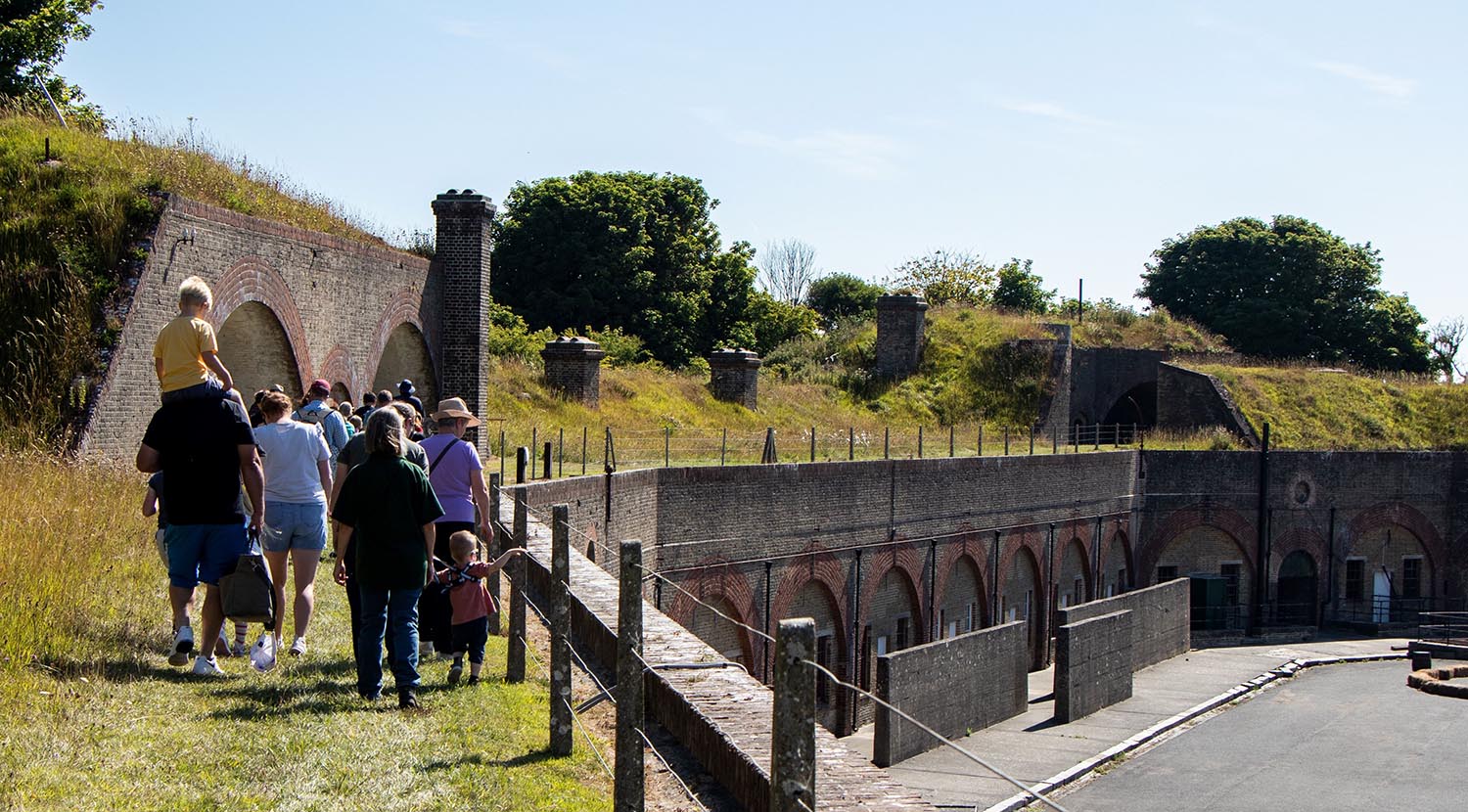Overlooking the White Cliffs of Dover and Britain’s busiest ferry port, Fort Burgoyne was acquired by the Land Trust in 2014, with the vision of making the site a key part of the community once more.
Dating back to the 1860s, the Fort was built to protect Dover Castle and with its historical importance, imposing facade and abundant space, it is an amazing opportunity waiting to be unlocked.
The main fort is closed to the public except for special events. However, the wider estate, including the 25-hectare Coombe Hole Local Wildlife Site and the West Wing Battery, is open to visitors. The West Wing offers spectacular views and features a sound installation reflecting the site’s military history. Visitors can also enjoy the 7-hectare recreation ground and woodland surrounding the fort, and National Cycle Network routes which pass through the estate

The main Fort Burgoyne building is closed to the public except for events. The West Wing Battery: open 10am-4pm, Wednesday-Friday. The Estate: the recreation ground area and Coombe Hole local wildlife site - open public access.
There is no formal parking available for the estate however, there is limited parking in a layby on Dover Road
Maintained footpaths
Dogs Welcome
White Cliffs Countryside Partnership
Coombe Hole Local Wildlife Site
The 25 hectare rolling slopes of Coombe Hole local wildlife site provide spectacular views across Dover whilst walking through grassland managed for nature. Popular for walking and dog walking this space connects into the more formal Dover District Council owned Connaught Park with paths which lead into Dover town centre from here.
The West Wing
In 2023 the West Wing Battery of the Fort was opened to the public following major investment in the conservation of structures on site and works to support access. This space, which has restricted opening times, or, The West Wing Battery is open 10am – 4pm, Wednesday, Thursday & Friday, and contains gatehouse, gun shed, tool shed and gun platform dating from the construction of Fort Burgoyne. The views to the South, East and North from the Gun Platform are spectacular and the entire space is brought to life by the sound installation ‘I Would Rather Walk With You’ by Emily Peasgood. This piece, funded by National Lottery Heritage Fund and Arts Council as part of Pioneering Places East Kent project, blends archival soldier audio material with bespoke choral recording and material produced by the community to take the audience on a journey which recognises the military past of the space through to it developing into an important community space. The what3words location of the entrance gates to the space is – ///spices.super.noted
Recreation Ground
7 hectares of recreation ground and woodland extend around the North and East of the Fort providing glimpses into the ditch of the Fort together with spectacular views into the Kent Downs AONB and English Channel beyond.
Accessing the Fort Estate
National Cycle Network route 2 passes along Dover Road which splits Coombe Hole from the recreation ground area of the estate. The North Downs Way passes close to one of the entrances onto Coombe Hole via St James’s Cemetery with other areas of the estate connected by surfaced paths from Dover town centre. Bus stops on routes 80A, 80B, 81 & 93 are situated on Dover Road. For further information about accessibility to the site, please email fortburgoyne@dover.gov.uk.
Fort Burgoyne Road,
Guston,
Dover,
CT15 5FN
Fort Burgoyne was built in the 1860s as part of a network of coastal defences to protect Dover Castle from potential French invasion. Named after General Sir John Burgoyne, it housed a garrison and featured artillery positions. The Fort played a key role in military defence through World War II but became less relevant as military strategies changed. It was then decommissioned and fell into disrepair until The Land Trust acquired it in 2014, aiming to preserve its history and open it to the public for recreation and education.